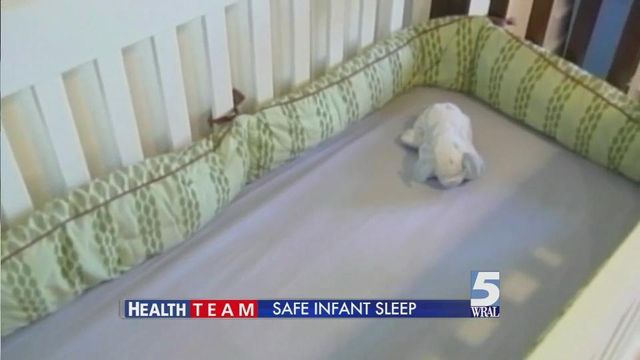Simple sleeping habits can help prevent sudden infant death
Sudden Infant Death Syndrome--or SIDS--is the unexplained death of an otherwise healthy child that usually occurs during sleep.
Posted — UpdatedSudden Infant Death Syndrome—or SIDS—is the unexplained death of an otherwise healthy child that usually occurs during sleep.
WakeMed recently received the "Model of Excellence" designation from the North Carolina Healthy Start Foundation for their work promoting "safe sleep" for infants.
Preventing SIDS begins with educating parents even before they leave the hospital with their newborn.
Kris and Eric Worth are the proud parents of their first child, whose name is Charley.
All new parents receive expert help from WakeMed specialists concerning topics like feeding and sleeping. For several years, the advice to parents came in three words, "back to sleep," which reminded parents to always put infants to sleep on their backs, not their tummies, to cut the risk of sudden infant death.
"We've sort of taken that a step further now," said WakeMed Pediatrician Dr. Karen Chilton. "The medical community is really focusing on the sleep environment."
Chilton says it begins with the mattress infants sleep on. Infants shouldn't sleep on a hard surface, but it shouldn't be too soft, either.
"(Infants need) a firm surface that doesn't have a lot of give (and) a fitted or firmly tucked-in sheet that can't pull loose at the corners," Chilton said.
She says anything that could get in the way of a child being able to breathe could become a threat to the infant's life. That includes baby bumper pads on the sides of a crib as well as other loose blankets and stuffed toys.
"They don't need stuffed animals around," Chilton said. "That all looks cute. Put those things in there, take the picture and then take them out of the crib."
Chilton says babies under a year of age are at risk for SIDS. The risk decreases when the baby is able to move themselves to their tummy and then back to their back without much trouble.
Parents might lay the baby on their back in one place in the crib, but as they get a bit older, they can move around. So, parents should make sure there is nothing that will cause the child to not be able to breathe.
Older babies still face the risk, especially when they have a cold or congestion.
Chilton says babies are most comfortable with one more layer, which can be a layer of clothing like a T-shirt or a onesie. If parents choose a blanket, though, Chilton says make sure it is not loose but still somewhat snug.
Also, Chilton says to place infant's feet already at the end of the crib so they can't scoot any lower and get under a blanket and to make sure the top of the blanket is not too close to the face.
• Credits
Copyright 2024 by Capitol Broadcasting Company. All rights reserved. This material may not be published, broadcast, rewritten or redistributed.





